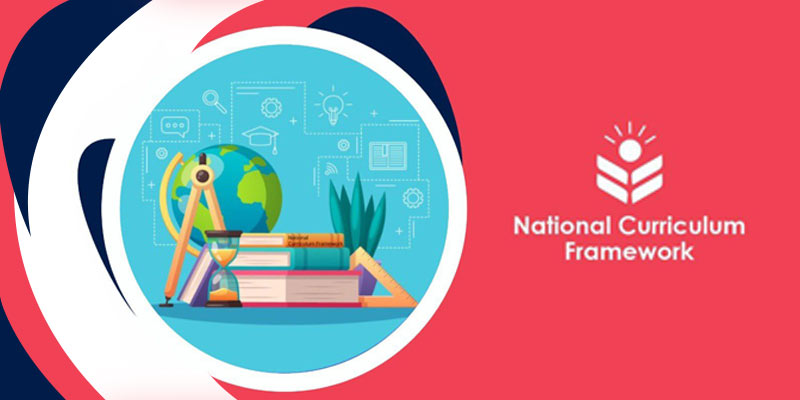- India
- Aug 24
National Curriculum Framework proposes Board exams twice a year
• Union Education Minister Dharmendra Pradhan released the National Curriculum Framework for School Education (NCF-SE) on August 23.
• The entire curriculum framework for all the four stages – Foundational Stage, Preparatory Stage, Middle Stage, and Secondary Stage – was released.
• Board exams twice a year, mandatory studying of Indian languages and increased number of minimum subjects for Classes 9-12 are among the recommendations made in the new National Curriculum Framework (NCF).
• The NCF has been prepared according to the new National Education Policy (NEP) by the national steering committee, headed by former ISRO chief K.Kasturirangan.
National Curriculum Framework
• The National Education Policy is a comprehensive framework to guide the development of education in the country. As a policy of education, it not only guides the development of education but also provides directions for regulating and promoting education.
• The first National Policy on Education was formulated in 1968, the second was in 1986 modified in 1992 and the latest was released on July 29, 2020.
• The Policy proposes the revision and revamping of all aspects of the education structure, including its regulation and governance, to create a new system that is aligned with the aspirational goals of 21st century education.
• The National Education Policy 2020 (NEP 2020) called for a complete transformation of India’s schooling system to make it of the highest quality for all students equitably, and to serve the needs and aspirations of the country and its people, today and for the future.
The policy recommends four National Curriculum Frameworks:
i) National Curriculum Framework for School Education (NCFSE)
ii) National Curriculum Framework for Early Childhood Care and Education (NCFECCE)
iii) National Curriculum Framework for Teacher Education (NCFTE)
iv) National Curriculum Framework for Adult Education (NCFAE).
• The purpose of the National Curriculum Framework for School Education (NCF-SE) is to help to bring about such changes by effecting corresponding positive transformations in India’s school curricula.
• Curriculum refers to the entirety of the organised experience of students in any institutional setting towards educational aims and objectives. The elements that constitute and bring to life a curriculum are numerous, and include goals and objectives, syllabi, content to be taught and learnt, pedagogical practices and assessment, teaching-learning materials, school and classroom practices, learning environment and culture of the institution, and more.
• There are other matters that directly affect a curriculum and its practice or are integrally related while not being within the curriculum. These include the teachers and their capacities, the involvement of parents and communities, issues of access to institutions, resources available, administrative and support structures, and more.
Some key recommendations:
Changes in Board examinations
• The Board examinations for Classes 10 and 12 will be substantially reformed. These will be made ‘easier’ — the Board examinations will primarily aim to assess understanding and achievement of competencies rather than months of coaching and memorisation.
• Board examinations should assess the achievement of competencies for the secondary stage as stated in the curriculum. These examinations should provide a valid and reliable picture of student performance as per the competencies in the curriculum.
• Board examinations should be offered at least twice a year to ensure that students have enough time and opportunity to perform well. Only the best score being retained students can then appear for a Board examination in subjects they have completed and feel ready for. This will enable the move towards a system of ondemand examinations in the near future as described in NEP 2020.
• In the long term, all Boards should change to semester or term-based systems, where students can test in a subject as soon as they have completed the subject, which would further reduce the content load being tested in any one examination.
Language education
• The rich multilingual heritage of India is given its due place in the Language Education curriculum. The curriculum aims at developing linguistic proficiency for academic use in three languages by age 15 (Class 10). At least two out of these three languages should be languages native to India. At least one language native to India will be studied at the ‘literature level.’
• At least one language native to India will be offered as an option for the medium of instruction to all students up to Class 12.
• In Classes 11 and 12, at least two languages will be studied, at least one of which is a language native to India.
Manorama Yearbook app is now available on Google Play Store and iOS App Store

